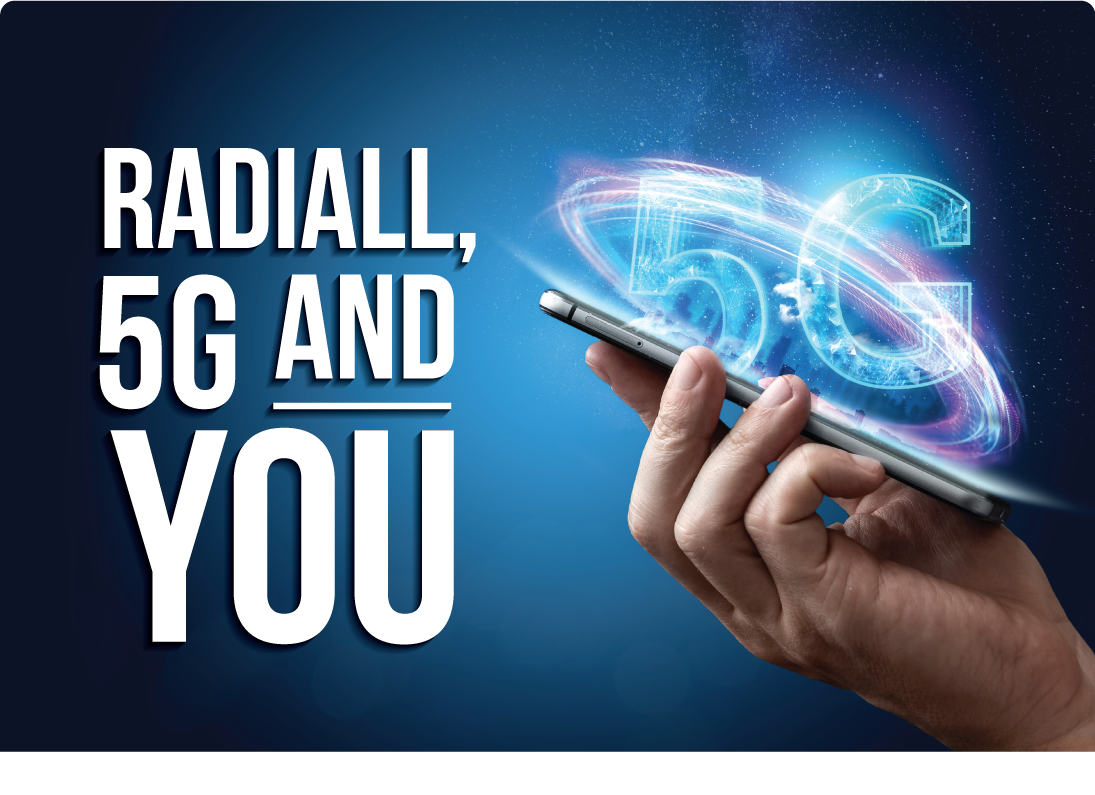Radiall, 5G and You
Technology is advancing more and more every day. And as a society, we expect it to keep advancing. The demand for faster speeds, better connections and “smarter” devices is only increasing. At the heart of these new technologies is 5G. While many of us are familiar with this term, we might not understand what it really means. So let’s break down a few of the basics of 5G and share how Radiall supports 5G technology.
What is 5G?
5G stands for fifth generation, and it follows four previous generations of cellular networks. 1G networks made it possible to make calls from mobile phones. 2G networks made text messaging possible. 3G networks made browsing the Internet from your phone possible, and 4G networks made 3G capabilities even faster. This brings us to 5G networks.
4G is nowhere near obsolete, but due to the increasing number of mobile users, it is beginning to reach its capacity. 5G is bringing and will continue to bring us much faster speeds, faster download times, faster response times, instant 4k streaming and new technologies, such as autonomous cars.
How does 5G work?
Before we dive into the technology behind 5G, it is important to understand that the generations of cellular networks do not always replace each other; rather, they sometimes build upon each other. 3G replaced 1G and 2G, and 4G will eventually replace 3G. However, 5G will not replace 4G. 5G will build upon the existing 4G network, and the two networks will work simultaneously.
A few key technologies make 5G possible. In this breakdown, we will focus on two: small cells and massive MIMO.
Small Cells
Small cells are composed of radio equipment and antennas, and they are placed on streetlights, buildings and other locations to provide better network coverage in highly-populated areas. Small cells are located closer together than traditional cell towers. This gives data signals more options when traveling to send and receive signals; it also eliminates the chance of signals interfering with other signals along the way.
Have you ever been in a congested area and experienced slow cell coverage? Maybe your Instagram feed wasn’t loading as quickly as it normally does, or the YouTube video you were streaming was blurry. Small cells will reduce these coverage slowdowns.
Massive MIMO
Massive MIMO (multiple-input, multiple-output) is another technology that will contribute to 5G networks. MIMO is a wireless technology that enables cell towers to transfer and receive multiple data signals simultaneously. Currently, most cell towers contain around 12 MIMO ports. Massive MIMO will drastically increase the number of ports on a cell tower, potentially up to 100 ports. Consequently, this will allow cell towers to transmit and receive more data signals than ever before, leading to faster network speeds for mobile users.
Small cells and massive MIMO are just two of the key technologies that make 5G possible. If you’re interested in learning about other technologies that enable 5G, watch this short video.
How does Radiall contribute to 5G?
Radiall has developed low PIM antenna connections such as NEX10 and 4.3-10, as well as outdoor connectors such as OCTIS, RXF and R2CT for critical radio links. These options support small cell and massive MIMO technologies. Standard and custom-designed solutions contribute to these two integral aspects of 5G, leading to faster and more reliable connections for mobile users.
We are excited to play a part in making 5G a reality and contributing to its implementation in everyday life. As we develop new solutions and test the limits of this new generation, we are looking forward to discovering even more capabilities of 5G.
Learn more about our products that support 5G.
Outdoor Connectors
NEX10
4.3-10


